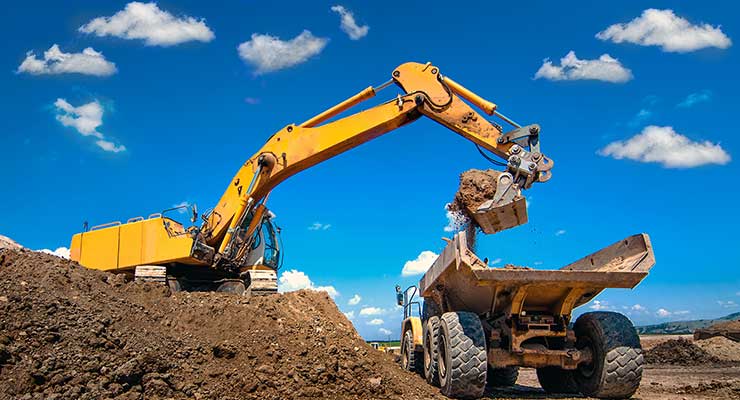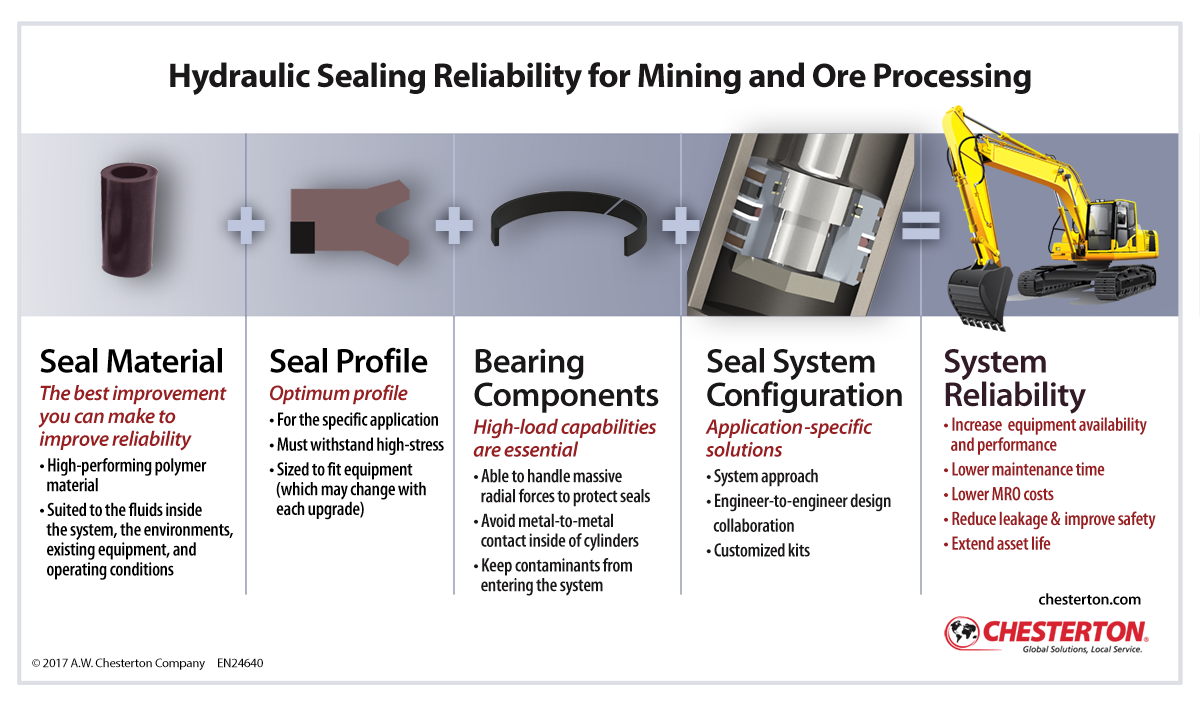Those involved in mobile mining know that super-large, hydraulic equipment plays a major role in discontinuous surface mining operation for solid (hard rock) commercial minerals. This includes a wide range of equipment including off-road haul trucks, hydraulic excavators, shovels, dozers, and front loaders.
Growing worldwide economic pressures in mining and 24/7/365 schedules have made the reliability and availability of this massive equipment even more essential. There are ever-increasing demands for higher productivity at lower costs. Many mining operations have held off on new equipment orders and are pushing aged equipment to its limits.
The Role of Hydraulic Seals in Mobile Mining
For these reasons and others, it’s important to understand the role of reliable and high-performance hydraulic seal designs, seal materials, and seal support systems. Selected and installed correctly, they are essential to avoid unplanned maintenance, reduce costly repairs, and extend equipment life. The right cylinder upgrade and sealing solution can double or even triple the rebuild cylinder cycle.
Combining the best seal design/material technology with a total cylinder re-fitting saves money and delivers a better, more reliable cylinder back to the mine.
You’ll be able to:
- Address environmental issues
- Improve equipment reliability
- Extend leak-free service life
- Reduce hydraulic oil consumption
- Minimize downtime and maintenance costs
Cylinders/Actuators & Their Role in Equipment Reliability
Using a human body analogy, if the super structure of large hydraulic equipment is the bone/skeleton, then hydraulics is the circulatory system (with the hydraulic pump as the heart). Hydraulic cylinders can be considered the “muscles” of these technical giants. They turn energy into force and motion. When they don’t work effectively, the entire system suffers.
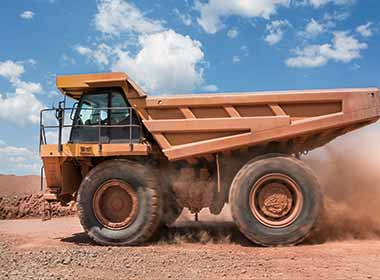
Cylinder Wear & Tear
In the demanding mining or mineral processing environment, cylinders and actuators are exposed to some of the worst combinations of harsh conditions, including:
- Corrosion
- Contamination
- Side loading
- Shock loading conditions
- High vibration
- High operating temperatures
New Technologies = Increased Equipment Stresses
Compounding these stresses on cylinders are increased demands caused by new mobile mining technology designed to boost production and optimized costs. These include:
- Higher bucket payload: Increased system operating pressure. The current average operating pressure is over 310 bar (31MPa)
- Space and weight: Increased operating pressure to reduce size of cylinders
- Reduced tank size: Due to space and weight challenges, the tank capacity of mobile hydraulic equipment is often less than ideal. It means less oil circulating in the systems, having shorter dwell time in the tank, and the release of contaminants (solid particles, air bubbles, water, etc.)
- More harsh environment: Mobile mining hydraulic cylinders work in dirty, dusty, abrasive conditions, and temperature extremes (high and low)
Altogether these forces increase the physical and thermal load on seal components. Because of the shorter dwell time, the sediments have no time to settle and end up contaminating the system and impacting performance. Therefore the fluid provides less effective lubrication to the seals in combination with increased wear and abrasion.
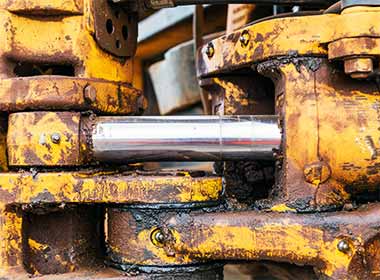 Hydraulic Cylinders/Actuators & Premature Failure
Hydraulic Cylinders/Actuators & Premature Failure
The end results of these pressures is that hydraulic cylinders and actuators can have frequent maintenance issues or fail. More often than not, the issues are caused by hydraulic seals and bearing/guiding components.
Logic follows that selecting the best seal for the specific mining application, optimal seal material, and support seal/bearings will go a long way toward increasing overall hydraulic equipment performance and reduce failure concerns.
Primary Causes of Seal Failures in Mobile Mining
What causes most seal failures in mobile mining applications? In line with the Pareto “80/20” rule, the majority of seal failures are typically caused by a short list of possibilities:
- Fluid viscosity and fluid compatibility
- High or low temperature exposure
- Shock load
- Operating speed
- Side loading
- Excessive clearances
- Environmental issues
NOTE: In many (or most) of the cases, failures are caused by the accumulated impact of above the reasons to different degrees.
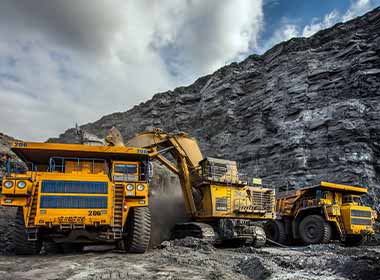
Direct and Indirect Consequences of Seal Failures
Severe leakage represents a loss that either causes operational performance issues or impacts hydraulic media. Both result in losses that find their way onto the bottom line. In addition to the cylinder performance reduction and direct fluid loss, there are other related costs that have to be considered, such as:
- Fluid clean-up and disposal
- Hazard
- Extra labor
- Administrative cost (record keeping to environmental agencies, documenting fluid usage and disposal)
- Possible fines for ground contamination and/or environmental impacts
All the above factors address direct failure effects of the seals. But the major cost of leakage is consequential production loss, due to down time for repair of most critical cylinders of the mobile mining equipment. This is called indirect failure effect: The seal elements fail, but the failure is not noted until either metal components or the complete cylinder failure. In this case significantly more downtime and cost is incurred.
Criteria for Optimal Seal Selection
Extended, leak- and trouble free service can be achieved by installing high-performance, longer lasting seal component parts in the properly designed cylinder.
Focus on:
- The right seal profile for the specific application and operating conditions
- The optimal seal material for the type of stresses/abrasion impacting the equipment and the condition of the equipment itself.
- The positive rake wipers for more effectively cleaning and and dislodging of foreign
matter from retracting rods to prevent scoring and system contamination. - High load capability guiding elements for moving components, handling radial forces and avoiding metal-to-meta contact inside of the cylinders.
The following application factors should be considered:
- Fluid pressure range: maximum operating pressure and/or pressure peaks (frequency and severity) caused by dynamic, shock loads on cylinders
- Temperature range: The range of the fluid and seal application temperature, both in operation and in standstill position
- Operating speed: The stroking speed of the reciprocating motion (and possible vibration)
- Hydraulic media: Type and viscosity of fluid used in the system
- Hardware dimensions: Rod and bore diameters, seal groove dimensions and clearances
- Application and operation of the cylinder
Seal Selection
 The above criteria will determine the selection of the optimum seal materials, profiles and – in combination – the complete seal system. The most important features of proper seal and bearing components for superior performance are:
The above criteria will determine the selection of the optimum seal materials, profiles and – in combination – the complete seal system. The most important features of proper seal and bearing components for superior performance are:
- High wear and abrasion resistance
- High pressure resistance
- High temperature resistance
- Long term elastic memory
- Outstanding extrusion resistance
- High load capability
If you would like assistance selecting the best hydraulic seal solutions for your specific cylinder application, feel free to contact our Ask the Expert desk.
